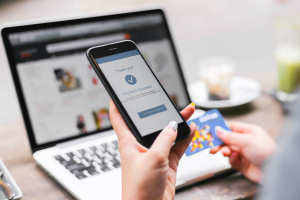In the shadow of the COVID-19 pandemic, workplaces worldwide have undergone a seismic shift towards remote working. This adjustment involves much more than just allowing employees to access work resources from various locations. It necessitates the update of remote working policies and heightened cybersecurity security awareness.
Cybercriminals and potential nation-states are reportedly exploiting the global health crisis for their own gain. Hackers have targeted an array of sectors, including healthcare, employing COVID-19-related baits to manipulate user behavior. This article aims to provide a comprehensive guide on how you, as an employee, can augment your cybersecurity measures and stay safe when working remotely.
Understanding the Threat Landscape
It has been reported that criminals are using COVID-19 as bait in phishing emails, domains, malware, and more. While the exploitation of this global crisis is disheartening, it is unsurprising as criminals habitually leverage large events to their advantage. That said, it’s crucial to identify potential targets, particularly in certain geographic regions.
The data so far reveals a broad geographic dispersion of ‘targets,’ with many countries that are typical phishing targets being hit. However, there are anomalies such as Panama, Taiwan, and Japan, suggesting possible campaigns targeting specific countries. The landscape is continuously evolving as more threats are identified, necessitating vigilant monitoring on your part to stay safe.
→ Dig Deeper: McAfee Labs Report Reveals Latest COVID-19 Threats and Malware Surges
Contextualizing Working from Home Threats
The abrupt shift to remote work has left many employees unprepared, with some needing to operate from personal devices. These personal devices, if lacking appropriate security measures, can expose both you and your company or employer to various potential attacks.
Over the last few years, there has been a surge in targeted ransomware attacks, particularly through “commodity malware.” This malware type is often directed at consumers. Consequently, accessing work networks from potentially infected personal devices without appropriate security measures significantly increases the risk. Both employees and employers are left vulnerable to breaches and ransomware lockdowns.
Know the Risks of Online Connectivity and Collaboration
Office closures and working-from-home mandates due to COVID-19 permanently changed the way we look at workplace connectivity. A recent Fenwick poll among HR, privacy, and security professionals across industries noted that approximately 90% of employees now handle intellectual property, confidential, and personal information on their in-home Wi-Fi as opposed to in-office networks. Additionally, many are accessing this information on personal and mobile devices that often do not have the same protections as company-owned devices. The elevated number of unprotected devices connected to unsecured networks creates weak areas in a company’s infrastructure, making it harder to protect against hackers.
One technology your organization should be especially diligent about is video conferencing software. Hackers can infiltrate video conferencing software to eavesdrop on private discussions and steal vital information. Many disrupt video calls via brute force, where they scan a list of possible meeting IDs to try and connect to a meeting. Others seek more complex infiltration methods through vulnerabilities in the actual software. Up until recently, Agora’s video conferencing software exhibited these same vulnerabilities.
Hackers will usually try to gain access to these network vulnerabilities by targeting unsuspecting employees through phishing scams which can lead to even greater consequences if they manage to insert malware or hold your data for ransom. Without proper training on how to avoid these threats, many employees wouldn’t know how to handle the impact should they become the target.
Remote Working: Best Practices
If you’re an employee working remotely, it is essential to comprehend and adhere to best security practices. Here are some guidelines you could follow:
- Remote Working Policy Guidance: Understand clearly what the remote working expectations of your company are, especially with respect to security practices.
- Asset Classification: With added security, make previously inaccessible information available for remote use.
- Strong Authentication: Secure access to key assets using two-factor authentication.
- Awareness: Be informed about the potential risks of connecting remotely and the need to exercise caution while accessing authorized shared services and handling targeted phishing emails.
- VPN Access: Use virtual private networks (VPNs) for a secure connection from untrusted networks.
- Regular Software Updates: Ensure that your operating system, software applications, and security tools are regularly updated with the latest patches and updates. Cybercriminals often target known vulnerabilities in outdated software.
- Firewall Protection: Activate and maintain a firewall on your remote device to block unauthorized access and protect your system from malicious traffic.
- Safe Online Behavior: Exercise caution when clicking on links, downloading files, or opening email attachments, even if they appear to be from trusted sources. Verify the authenticity of such content to avoid falling victim to phishing attempts.
- Physical Security: Ensure that your remote work area is secure. Lock up any physical documents or devices containing sensitive information when they are not in use.
- Secure Mobile Device Usage: If you use a mobile device for work, ensure it is protected with a strong passcode or biometric authentication. Install security apps to remotely wipe the device if it is lost or stolen.
- Collaboration Etiquette: When collaborating with colleagues remotely, be mindful of data-sharing practices and adhere to your organization’s collaboration guidelines to maintain security.
- Separate personal and business devices: We may have brought work home with us, but nonetheless, we must strive to maintain a work/life balance and set boundaries between our personal and work life. Setting these boundaries makes it easier to separate the technology we use in our lives as well. Avoid sharing your company’s devices with family members who are not aware of the best security practices, especially children. Also, keep personal accounts separate from company accounts to prevent sharing information through personal channels.
Security Solutions and Tools
Considering the rise of remote working, it is more crucial than ever for employees, especially those working remotely, to invest in secure solutions and tools. However, as end-users, it’s also wisest to take extra steps like installing comprehensive security software to ward off cyber threats. These software have features that collectively provide a holistic approach to security, detecting vulnerabilities, and minimizing the chance of an attack.
We recommend McAfee+ and McAfee Total Protection if you want an all-inclusive security solution. With a powerful combination of real-time threat detection, antivirus, and malware protection, secure browsing, identity theft prevention, and privacy safeguards, McAfee+ and McAfee Total Protection ensure that your devices and personal information remain secure and your online experience is worry-free.
McAfee Pro Tip: Gauge your security protection and assess your security needs before you get a comprehensive security plan. This proactive approach is the foundation for establishing robust cybersecurity measures tailored to your specific requirements and potential vulnerabilities. Learn more about our award-winning security products award-winning security products.
Tailored Security Education for Employees
In the current digital age, employees must be aware of their crucial role in maintaining organizational security. As such, you should consider engaging in tailored security education and training programs that help employees identify and avoid potential threats such as phishing and malicious downloads. Regular training and updates can be beneficial as employees are often the first line of defense and can significantly help mitigate potential security breaches.
To ensure effective acquisition of knowledge, engage in security training that is designed in an engaging, easy-to-understand manner and utilizes practical examples that you can relate to. Successful training programs often incorporate interactive modules, quizzes, and even games to instill important security concepts.
Enhancing Communication and Collaboration
Effective communication and collaboration are paramount in a remote working environment. Employees need to share information and collaborate on projects effectively while ensuring that sensitive information remains secure. Use and participate in platforms that enable secure communication and collaboration. Tools such as secure messaging apps, encrypted email services, secure file sharing, and collaboration platforms will ensure information protection while allowing seamless collaboration.
Make sure that you’re provided with detailed guidelines and training on the proper use of these tools and their security features. This will help prevent data leaks and other security issues that can arise from misuse or misunderstanding.
→ Dig Deeper: Five Tips from McAfee’s Remote Workers
Conclusion
The transition to a remote working environment brings with it various cybersecurity challenges. Prioritizing secure communication and collaboration tools, coupled with ongoing education and adherence to best practices, can help you navigate these challenges with confidence, ultimately reaping the benefits of a flexible and efficient remote work environment while safeguarding critical data and information. McAfee can help you with that and more, so choose the best combination of features that fits your remote work setup.












